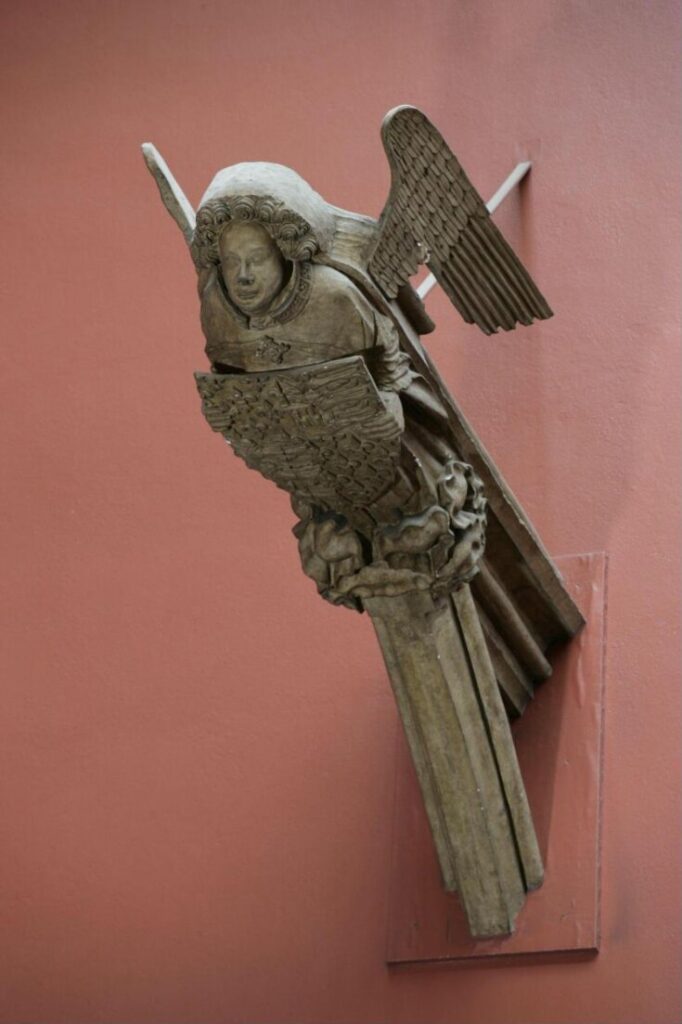
V&A
A corbel is a structural piece of stone, wood or metal jutting from and embedded in a wall to carry a superincumbent load such as an arch, beam, parapet or truss, essentially acting as a supported cantilever.[1] It differs from the similar-looking console, an ornamental piece applied to the structure of a building to give the appearance of supporting the architectural element above it, such as a balcony,[2] a distinction mirroring that between the column and the pilasterDecorative architectural element used to give the appearance of a supporting column, to articulate an extent of wall..
The term is derived from the Old French corbel, which in turn comes from the Latin corvellum, a diminutive of corvus, meaning “raven”, in reference to the structure’s beak-like appearance.[3]
Corbels fixed high in the wall of a medieval church, supporting an arch or vault rib, were often given the form of angels, because of their lofty position.[4]
